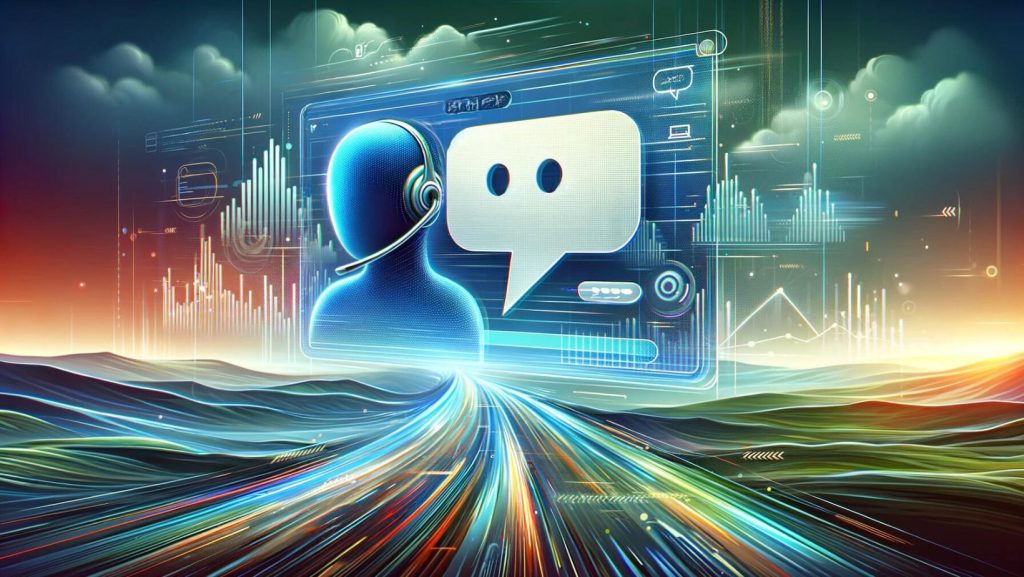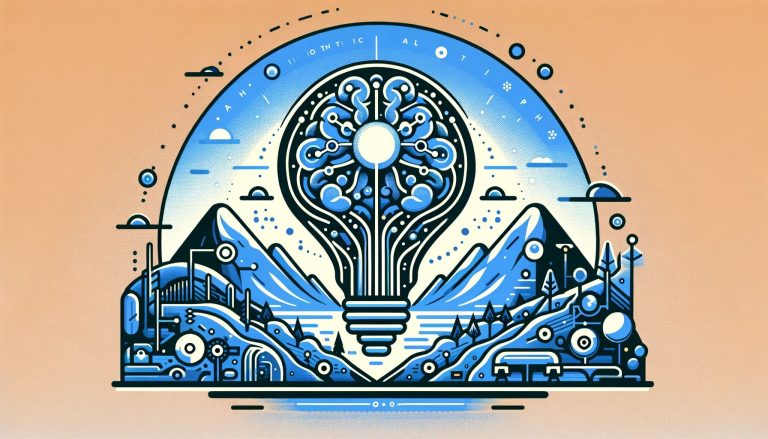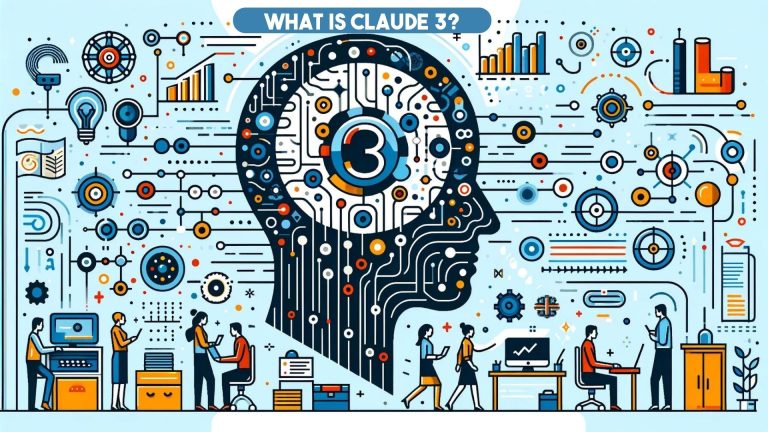Differences Between ChatGPT-4 and ChatGPT-4o
Are you wondering about the differences between ChatGPT-4 and ChatGPT-4o? As OpenAI continues to push the boundaries of generative AI, these two powerful language models have taken center stage. While ChatGPT-4 has already made waves with its advanced capabilities, the introduction of ChatGPT-4o promises to bring even more possibilities to the table.
Whether you’re a business looking to leverage AI for your applications or an individual curious about the latest advancements, understanding the distinctions between these models is essential. Let’s explore what sets ChatGPT-4 and ChatGPT-4o apart.
Key Features of ChatGPT-4
ChatGPT-4, the successor to GPT-3.5, boasts several significant improvements that make it a top choice for enterprises and power users. Here are some of its standout features:
- Advanced Reasoning Capabilities: ChatGPT-4 excels at handling complex tasks and open-ended questions, providing more accurate and nuanced responses.
- Larger Context Window: With a context window of either 32K or 128K, ChatGPT-4 can process and generate longer, more coherent pieces of content.
- Multimodal Capabilities: ChatGPT-4 can understand and analyze images, allowing for more diverse use cases and applications.
- Plugins and Collaborative Features: Users can extend ChatGPT-4’s functionality through various plugins and leverage collaborative features for teamwork and project management.
- Improved Accuracy and Safety Measures: ChatGPT-4 has undergone extensive training to enhance its accuracy and safety, reducing the likelihood of generating harmful or biased content.
Key Features of ChatGPT-4o
ChatGPT-4o, also known as GPT-4o or Omni, is OpenAI’s latest flagship model that brings ChatGPT-4-level intelligence to all users, including those on the free tier. Key features include:
- Accessibility: ChatGPT-4o is available to both free and paid users, with paid subscribers enjoying higher usage limits and advanced features.
- Faster and Cheaper: ChatGPT-4o is 2x faster and 50% cheaper than ChatGPT-4 Turbo, making it more cost-effective for businesses and individuals.
- Higher Rate Limits: Paid users have access to 5x higher rate limits compared to ChatGPT-4, enabling more extensive usage and scaling.
- Improved Vision and Language Capabilities: ChatGPT-4o boasts enhanced vision and non-English language capabilities, catering to a wider global audience.
- Large Context Window and Up-to-Date Knowledge: With a 128K context window and a knowledge cutoff date of October 2023, ChatGPT-4o can handle lengthy inputs and provide more current information.
Pricing and Accessibility
One of the most significant differences between ChatGPT-4 and ChatGPT-4o lies in their pricing and accessibility:
- ChatGPT-4: Available through paid plans and APIs, with prices starting at $0.03 per 1K tokens for the 8K context model and $0.06 per 1K tokens for the 32K context model.
- ChatGPT-4o: Accessible to both free and paid users. Free users have limited access to ChatGPT-4o’s capabilities, while paid subscribers (ChatGPT Plus) enjoy 5x the capacity and early access to new features.
The introduction of ChatGPT-4o marks a significant step towards making advanced generative AI accessible to a broader audience, empowering more individuals and businesses to leverage its capabilities.
Performance Comparison
When it comes to performance, both ChatGPT-4 and ChatGPT-4o are highly capable models that excel at handling complex tasks and open-ended questions. However, there are some notable differences:
- Response Speed: ChatGPT-4o is slightly faster at responding compared to ChatGPT-4, making it more suitable for real-time applications and conversational AI.
- Output Quality: While both models produce high-quality output, ChatGPT-4o’s improved vision and language capabilities may give it an edge in certain use cases.
- Multimodality: ChatGPT-4o’s ability to generate voice and video responses sets it apart from ChatGPT-4, opening up new possibilities for interactive and engaging content creation.
Ultimately, the choice between ChatGPT-4 and ChatGPT-4o will depend on the specific requirements and budget of the user or organization.

Use Cases
ChatGPT-4 and ChatGPT-4o can be applied to a wide range of personal and enterprise use cases, including:
- Content Generation: Both models can assist in creating engaging, SEO-optimized articles, blog posts, product descriptions, and more.
- Customer Support: Businesses can leverage these models to build intelligent chatbots that provide quick and accurate responses to customer inquiries.
- Language Translation: With their advanced language capabilities, ChatGPT-4 and ChatGPT-4o can help break down language barriers and facilitate global communication.
- Creative Writing: Writers can use these models to generate ideas, develop characters, and even co-author entire stories or scripts.
- Code Generation: Developers can take advantage of the models’ ability to understand and generate code snippets, aiding in rapid prototyping and bug fixing.
While both models are versatile, ChatGPT-4 may be more suitable for businesses that require advanced features, collaboration tools, and enterprise-grade security. ChatGPT-4o, on the other hand, is an excellent choice for casual users, startups, and organizations with limited budgets.
Personal Experience with ChatGPT-4 and ChatGPT-4o
Running an AI consulting agency has given me a unique perspective on these models. I’ve seen firsthand how businesses can benefit from the advanced features of ChatGPT-4, especially in complex scenarios requiring high levels of accuracy and safety. On the other hand, ChatGPT-4o has democratized access to cutting-edge AI, making it possible for even small startups to leverage powerful AI tools without breaking the bank.
I remember when I first started using ChatGPT-4. The advanced reasoning capabilities and larger context windows were game-changers for my team. We could handle more complex client requests and deliver more nuanced insights. However, the cost was a significant factor, especially for smaller projects.
When ChatGPT-4o was introduced, it felt like a breath of fresh air. The faster response times and lower costs made it accessible to a broader audience. I recommended it to several startups, and they were able to scale their operations quickly without compromising on quality.
FAQs
- Can I use ChatGPT-4o for free?
- Yes, ChatGPT-4o is available to free users, although with limited capabilities compared to paid subscribers.
- How much does ChatGPT-4 cost?
- ChatGPT-4 is available through paid plans and APIs, with prices starting at $0.03 per 1K tokens for the 8K context model and $0.06 per 1K tokens for the 32K context model.
- Is ChatGPT-4o better than ChatGPT-4?
- The answer depends on your specific needs and budget. While ChatGPT-4o offers improved speed, cost-effectiveness, and multimodality, ChatGPT-4 may be more suitable for enterprises requiring advanced features and collaboration tools.
- Can ChatGPT-4o generate images?
- No, ChatGPT-4o cannot directly generate images. However, it can analyze and understand images, enabling more diverse use cases and applications.
- What is the knowledge cutoff date for ChatGPT-4o?
- ChatGPT-4o has a knowledge cutoff date of October 2023, meaning it can provide information up to that point.
Key Takeaways
- ChatGPT-4 and ChatGPT-4o are both powerful generative AI models developed by OpenAI, each with unique features and capabilities.
- ChatGPT-4 offers advanced reasoning, larger context windows, multimodal capabilities, plugins, and collaborative features, making it suitable for enterprises and power users.
- ChatGPT-4o brings ChatGPT-4-level intelligence to all users, including those on the free tier, with improved speed, cost-effectiveness, and multimodality.
- The choice between ChatGPT-4 and ChatGPT-4o depends on factors such as specific requirements, budget, and target audience.
- Both models have a wide range of applications, from content generation and customer support to creative writing and code generation.
As the field of generative AI continues to evolve, OpenAI’s ChatGPT-4 and ChatGPT-4o represent significant milestones in making advanced language models more accessible and versatile. By understanding the differences between these models, businesses and individuals can make informed decisions on how to best leverage their capabilities for various use cases and applications.
Looking ahead, we can expect further advancements in multimodal AI, with models like ChatGPT-4o paving the way for more engaging and interactive content experiences. As OpenAI and other leading AI companies continue to push the boundaries of what’s possible, it’s an exciting time for both developers and end-users alike.
Regardless of whether you choose ChatGPT-4 or ChatGPT-4o, one thing is clear: generative AI is here to stay, and its potential to transform industries and reshape the way we work, communicate, and create is only just beginning to be realized.
Stay tuned for more updates and breakthroughs in this rapidly evolving space, and don’t hesitate to experiment with these powerful tools to unlock new possibilities and drive innovation in your own projects and endeavors.
Learn More About ChatGPT-4o
For a detailed explanation of ChatGPT-4o, check out my recent article on Medium. In this article, I dive deeper into the features, capabilities, and potential applications of ChatGPT-4o. If you’re curious about how this new model can revolutionize your work, it’s a must-read.
Let Web Leveling Help You
If you have any questions about how AI can help your business or if you’re interested in exploring the capabilities of ChatGPT-4 and ChatGPT-4o further, don’t hesitate to reach out. At our AI consulting agency, we specialize in helping businesses integrate AI technologies to drive innovation and efficiency. Visit our AI Consulting Services page for more information on how we can assist you. Whether you’re a startup looking to implement AI solutions or an established enterprise seeking to enhance your AI capabilities, we’re here to help you navigate the exciting world of generative AI.

Cal Hewitt is the Founder, CEO, and Project Lead at Web Leveling, a digital marketing agency empowering small and mid-sized businesses to thrive online. With over 27 years of experience in business analysis, management, consulting, and digital marketing, Cal brings a unique perspective to every project. He specializes in website design and development, AI consulting, social media marketing, and online reputation management. Cal’s hands-on leadership style and commitment to innovation ensure that Web Leveling stays at the forefront of digital marketing trends, delivering transformative results for clients.








